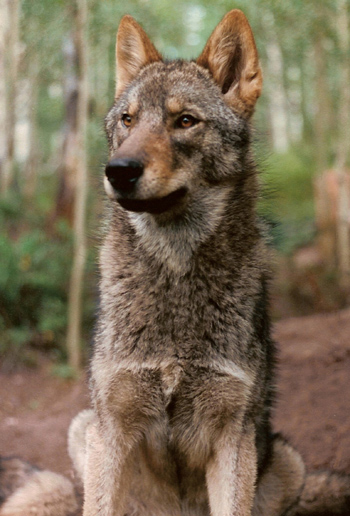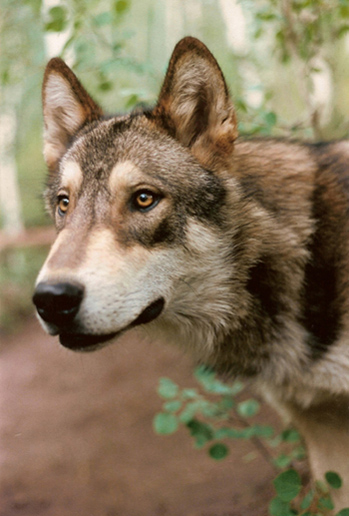Crimzon and Navarre


Photos © 2009 - Mission:Wolf
Crimzon and Navarre were brother and sister born in Jersey City, NJ in 1986. They were ½ gray wolf and ½ Alaskan malamute, and were products of a 20 year breeding project to create the ultimate wolf-dog. These two were the perfect example of wolf-dog crosses. Navarre was very doggy – he was aggressive, barked, and had the broad shoulders of the malamute. Whereas Crimzon was very wolf-like: she was shy, slinky and had the narrow chest and shoulders of a wolf. They looked very much alike, making the differences in size and behavior all the more striking. Some people even thought Crimzon was a rare red wolf because she looked so much like a full-blooded wolf.
Navarre and Crimzon spent many years living at Mission:Wolf once they lost their home in New Jersey. They taught volunteers and visitors that there is no predicting what wolf-dog pups will end up looking and acting like. As the brother and sister aged, Crimzon became very ill. It wasn’t until she lapsed into a coma that she was diagnosed with diabetes. Dr. Hancock, Mission:Wolf’s friend and veterinarian, rushed most of the 150 miles to the refuge to give Crimzon the insulin she so desperately needed. Sadly, despite everyone’s best efforts, Crimzon succumbed to diabetes in 1995.
Shortly after his beloved sister’s death, Navarre started dragging one of his rear legs around. No wounds were visible and he showed little sign of pain but he quickly lost all use of the leg. A trip to see Dr. Hancock revealed a dislocated vertebra in his back. It was deteriorating and soon paralyzed his other rear leg. Navarre had spent his life as the alpha male of his pack, and at ten years old he was not about to give up his postition. A sling wrapped around his waist supported by a person allowed Navarre to move about on his front legs and retain his life-long dignity. However, the pain associated with his condition quickly caught up with him, and he was laid to rest in August of 1996.
Many veterinarians across the country repeatedly donate their time and energy to wolf refuges. However, the cost of various surgeries, drugs, treatments and office time is so high that they cannot reasonably be expected to provide these services for free. A typical surgery costs between $1,000 and $3,000; each year Mission:Wolf finds itself in the waiting room two or thee times. Less dramatic vet runs can easily cost from $200 to $500, depending on what the problem is and what follow-up treatment is required.
One of the kindest things that you can do to help captive wolves and the refuges that care for them is to donate money to their ever-increasing vet bills. You can either designate your donation to be used solely for veterinary needs or for the general use of the refuge. In some cases, refuges have set up ways to make this easier for you. Mission:Wolf has set up a fund specifically designed to provide care for veterinary services called the Crimzon Fund, in memory of Dr. Hancock’s dedication and the wolf-dog he helped so much. Donations of money and medical supplies to the Crimzon Fund will be used for the future care of all wolves living at Mission:Wolf.
